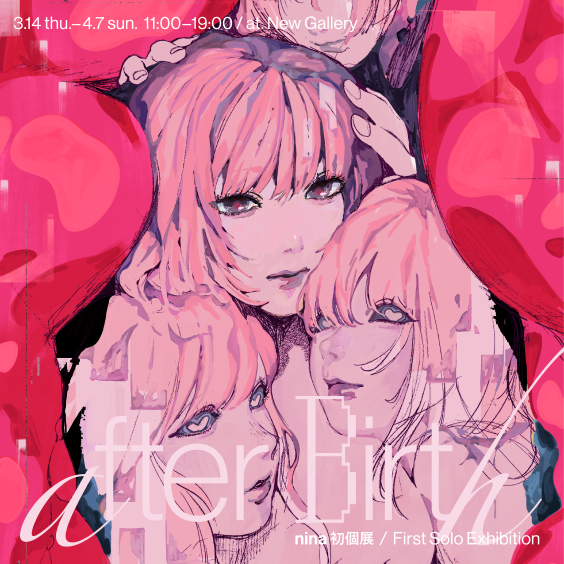Special Feature
2024.04.11
Digital is not a "lie" - an interview at nina's first solo exhibition "AfterBirth"
Merchandise: Making Art Feel More Accessible
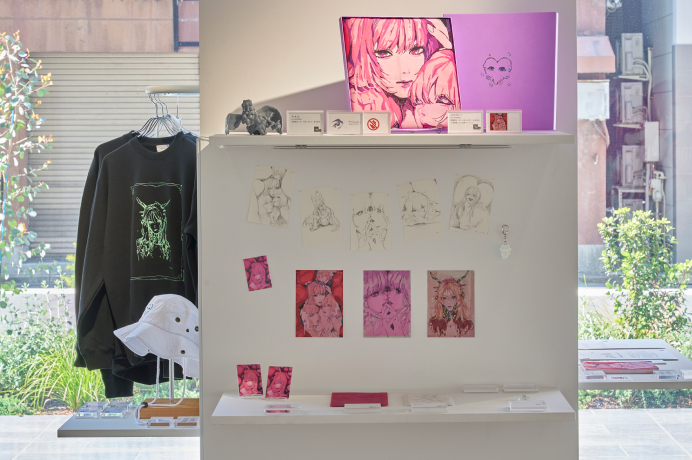
—I heard you also put a lot of effort into the merchandise.
I often buy merchandise myself when visiting museums. Items like postcards that I display at home are really important to me. They continually remind me of the exhibition experience, and I wanted to offer that to people who came to see my work.
—Do you have any favorite merchandise items or memorable moments from their creation?
I’m attached to all of them, but I particularly like the embroidered sweatshirts. I’ve always liked embroidered T-shirts, and I thought turning my drawings into embroidery would be interesting. I’m really satisfied with how well the drippy texture came out.
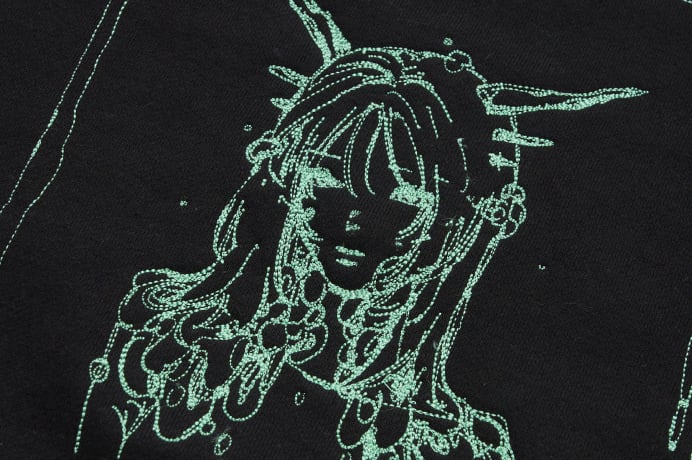
I also focused on the lenticular sticker postcards. I’ve always liked lenticular prints because they change with the viewing angle, and they pair well with animation, so I definitely wanted to try making them.
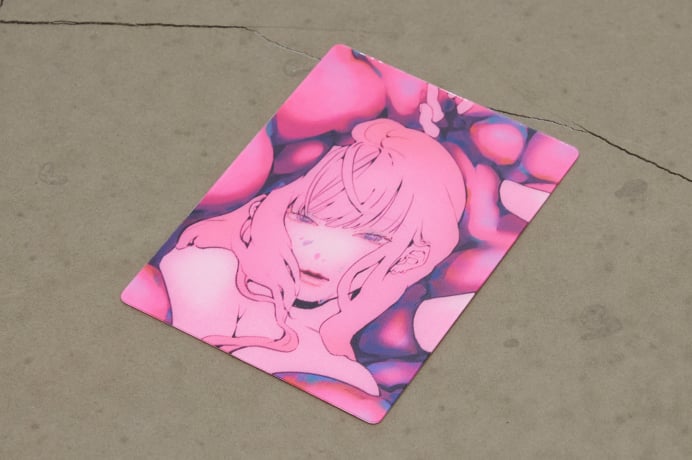
I’m also fond of the silk scarves. Friends had been telling me to make silk scarves, and this time I finally did it. They’re quite large at 60×60 cm, so I think they make the artwork feel more accessible.
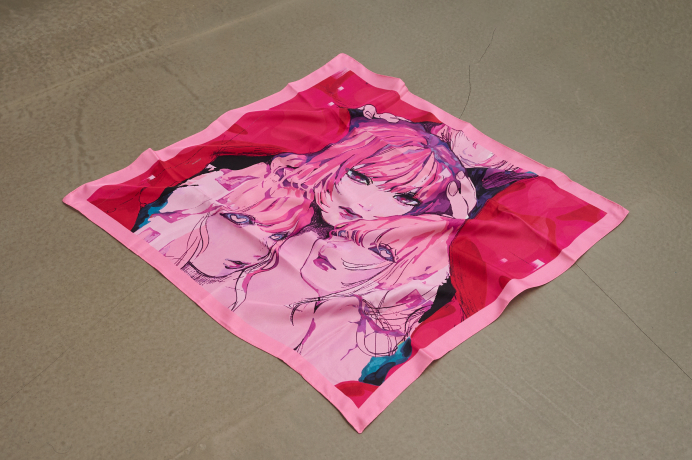
Reflecting on the First Solo Exhibition

—Looking back, what are your thoughts on your first solo exhibition?
It was terrifying at first, having studied fine arts at an art college, where exhibitions were essentially assessments by professors. But seeing how much fun the guests had at the reception and on the opening day reassured me. It made me realize that entertaining them is what matters most.
—Was there a difference between this and your usual client work?
It’s completely different. Client work is all about delivery, with clear right and wrong answers. You try to incorporate your own elements while meeting the request.
But self-initiated work comes entirely from within, offering more freedom but also more difficulty. It starts by diving deep to find what I want to draw, then figuring out how to convey that to others, the reverse order of client work.
—What was it like to sell your artwork for the first time?
It was simply thrilling. When I completed the three oil paintings, I felt sad thinking they would soon belong to someone else. But it was truly gratifying when they were bought. Normally, I paint with the expectation that an unspecified number of people will see my work, but selling one-of-a-kind paintings felt like engaging in one-on-one communication, which was refreshingly new.
Crossing Genre Boundaries
—Last November, you changed your artist name from "Ai Nina" to "nina". Was this in anticipation of the exhibition?
No, there was a completely different reason... Writing my surname "Ai" in Roman letters becomes "AI". With AI-generated art causing controversy, I thought it might not be the best look as I plan to expand my activities overseas.
—Understood...
But by simplifying my name to just "nina", I felt ready to compete purely on my own merits. The timing with the exhibition felt right.
—Having ventured into various forms of expression this time, how do you feel about it?
As I mentioned earlier, I’ve always felt discomfort with continuing only with digital expressions. This exhibition was a good opportunity to establish my axis as an artist.
From early on, I didn’t want to be confined to a specific genre of artist. That’s why I started showing my face and engaging publicly early in my career. More than just appreciating the art, I want people to understand me as a person and then see the work that emerges from that. This exhibition was a realization of that vision.
—What are you looking forward to trying next?
I strongly felt the desire to do more self-initiated exhibitions. I want to continue challenging myself with large paintings and sculptures. I also want to create original short animations.
Of course, music videos and artwork remain crucial aspects of my activities, so I will continue with those. Balancing client work and self-directed projects, I have many things I want to pursue in both areas, so I hope to keep moving forward on both fronts.

- Text by Tomoya Matsumoto
- AfterBirth photos by Ryo Yoshiya
- Artist photos by Ittetsu Matsuoka






